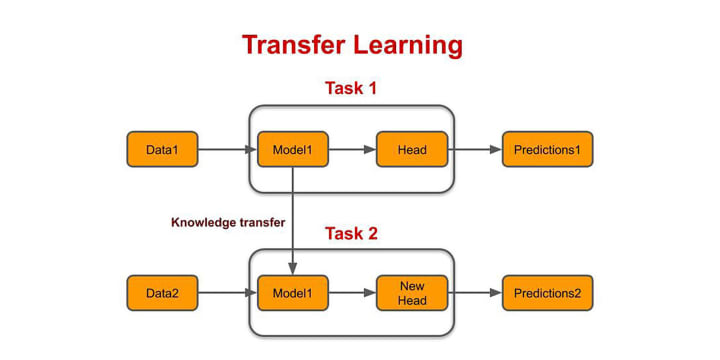Deep Machine Learning in AI - Volume : 3
#Generativemodels #Reinforcementlearning #Computervision

Deep Machine Learning in AI - Volume : 3
Volume : 3
#Generative models :
#Reinforcement learning:
#Computer Vision:
Deep Machine learning
#Generative models :
deep learning models that can generate new data, such as generative adversarial networks (GANs) and variational autoencoders (VAEs).
Generative models are a class of machine learning models that are designed to generate new data that is similar to the training data. They can be used for a variety of tasks, such as image synthesis, text generation, and anomaly detection.
There are different types of generative models, including:
Generative Adversarial Networks (GANs): GANs are a type of generative model that consist of two parts: a generator network and a discriminator network. The generator network generates new data, and the discriminator network tries to distinguish the generated data from the real data. The two networks are trained together in an adversarial manner, with the generator trying to generate data that can fool the discriminator and the discriminator trying to correctly identify the generated data.
Variational Autoencoders (VAEs): VAEs are a type of generative model that use a combination of an encoder and a decoder network. The encoder network takes in the data and maps it to a latent representation, and the decoder network maps the latent representation back to the data space. The goal of the VAE is to learn a probabilistic distribution of the data, and the new data can be generated by sampling from this distribution.
Autoregressive models: Autoregressive models are a class of generative models that predict the next value in a sequence based on the previous values. They are typically used to generate time series data such as music, speech and text.
Flow-based models: Flow-based models are a class of generative models that use normalizing flows to transform a simple distribution into a complex distribution that matches the training data. They are particularly effective at generating high-dimensional data such as images.
Generative Pre-training Transformer (GPT): GPT is a type of autoregressive model that uses a transformer-based architecture to generate text. GPT-2 and GPT-3 are notable examples, which have the ability to generate fluent and coherent text.
Generative models have several potential applications, such as creating new images and videos, generating new music and speech, and discovering patterns in large datasets. They also have potential applications in unsupervised representation learning and data augmentation.
#Transfer learning:
the process of using a pre-trained model as a starting point for a new task, to save time and computational resources.
Transfer learning is a technique in machine learning where a model trained on one task is used as a starting point to solve a different but related task. The idea is to transfer the knowledge learned from the source task to the target task, which can save a significant amount of training data and computational resources.

There are several types of transfer learning, including:
Feature-based transfer learning: This approach involves using the learned features from the source task as input to the target task. For example, a model trained on image classification can be used as a feature extractor for a new image classification task with a different set of classes.
Fine-tuning transfer learning: This approach involves using the pre-trained model and then fine-tuning the weights on a smaller dataset for the target task. For example, a model pre-trained on image classification can be fine-tuned on a new dataset for object detection.
Model-based transfer learning: This approach involves using the pre-trained model and using it as a feature extractor and training a new classifier on top of it. This method is commonly used in NLP tasks such as language modeling and question answering.
Multi-task learning: It is a form of transfer learning where a model is trained on multiple tasks simultaneously with the goal of learning shared representations that can improve performance on all tasks.
Transfer learning can be particularly useful when the target task has a small amount of labeled data, or when the target task is similar to the source task but has some variations such as different classes or different modalities. Popular pre-trained models such as BERT, GPT-2, and GPT-3 are used in transfer learning scenarios in NLP tasks.
Transfer learning is a powerful technique that can significantly improve the performance of machine learning models in various tasks and domains. It is widely used in computer vision and natural language processing tasks but it can be applied to other domains as well.
#Reinforcement learning:
using deep learning models to train agents that can make decisions in an environment, often used in gaming, robotics, and autonomous systems.
Reinforcement learning (RL) is a type of machine learning that focuses on training agents to make decisions in an environment by maximizing a reward signal. The agent interacts with the environment by taking actions and receives feedback in the form of rewards or penalties. Over time, the agent learns to select actions that maximize the expected cumulative reward.
Reinforcement learning problems can be formalized as Markov decision processes (MDPs), which consist of a set of states, a set of actions, and a reward function. The agent selects actions that transition the system from one state to another, and the goal is to find a policy, which is a mapping from states to actions, that maximizes the expected cumulative reward.

There are several types of reinforcement learning algorithms, including:
Q-learning: Q-learning is a model-free RL algorithm that estimates the optimal action-value function (Q-function), which gives the expected cumulative reward for taking a given action in a given state and following a certain policy thereafter.
SARSA: SARSA is another model-free RL algorithm that estimates the action-value function. It differs from Q-learning in that it uses the action selected by the current policy rather than the optimal action in the update rule.
Policy Gradients: Policy gradient methods are a class of RL algorithms that directly optimize the policy. The main idea is to update the policy in the direction of the gradient of the expected cumulative reward with respect to the policy parameters.
Actor-Critic: It is a class of RL algorithm that learns both the policy and the value function. The Actor component is responsible for selecting actions based on the current policy, and the Critic component estimates the value function, which can be used to update the policy.
Model-based RL: Model-based RL algorithms are RL algorithms that build a model of the environment and use it to plan the best course of action. These methods are more sample-efficient than model-free methods, but building a good model of the environment can be difficult in practice.
RL has been successfully applied to a wide range of problems, including robotics, game playing, recommendation systems, and control systems. It is particularly well suited for problems where the optimal solution is not known in advance and must be learned through trial and error.
#Natural Language Processing (NLP):
using deep learning models for tasks such as language translation, sentiment analysis, and text generation.
#Computer Vision:
using deep learning models for tasks such as image classification, object detection, and image segmentation.
Computer vision is a field of artificial intelligence that deals with how computers can be made to interpret and understand digital images and videos. The goal of computer vision is to enable computers to understand and interpret visual information in a way that is similar to how humans do.
There are several key areas of computer vision, including:
Image Processing: This area deals with the manipulation and analysis of digital images. Techniques such as image enhancement, segmentation, and feature extraction are used to extract information from images.
Object Recognition: This area focuses on identifying objects within an image or video. Techniques such as template matching, feature-based object recognition, and deep learning-based object recognition are used to identify objects.
Image Understanding: This area deals with understanding the meaning and context of an image. Techniques such as scene understanding, image captioning, and visual question answering are used to understand the meaning of an image.
Motion Analysis and Object Tracking: This area focuses on analyzing the movement of objects within a video. Techniques such as optical flow, feature-based tracking, and deep learning-based object tracking are used to track objects.
3D Computer Vision: This area deals with the representation and manipulation of 3D data, including point clouds, meshes, and volumetric data. Techniques such as stereo vision, structured light, and multi-view stereo are used to generate 3D models from 2D images.
Computer vision has wide range of application from self-driving cars, security cameras, medical imaging, robotics, and augmented reality. With the recent advances in deep learning, computer vision has made significant progress in object recognition, image understanding, and other areas.
These are just a few examples of the many topics within deep learning. There are many other specialized areas such as bio-medical image processing, 3D computer vision, video analysis and
Follow up : Deep Machine Learning in AI - Volume : 1
Follow up : Deep Machine Learning in AI - Volume : 2
About the Creator
ARUNINFOBLOGS
A information content writer creating engaging and informative content that keeps readers up-to-date with the latest advancements in the field.
Most of i write about Technologies,Facts,Tips,Trends,educations,healthcare etc.,






Comments
There are no comments for this story
Be the first to respond and start the conversation.